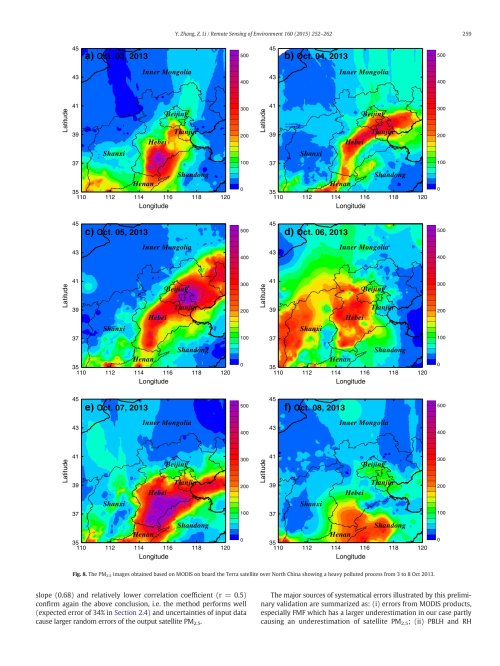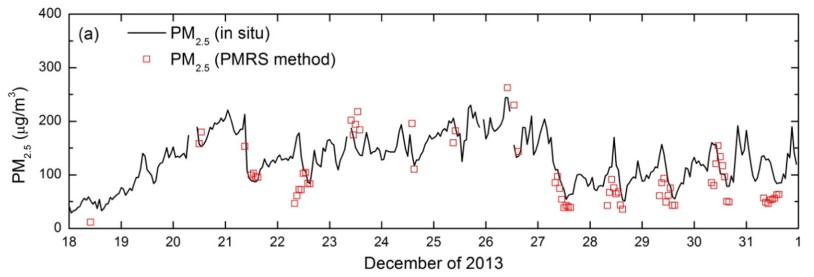Satellite remote sensing of atmospheric fine particulate matter (PM2.5) is currently a frontier and hot issue in atmospheric remote sensing field. This is a full of challenging topic, partly because remote sensing of PM2.5 has not yet considered during design of in-orbit sensors of which indicators need to study and re-analyze; on the other hand because the physical method of PM2.5 remote sensing has not been well established, few instantaneous satellite-based products are published by international communities.
In recent years, RADI has been striving for remote sensing of PM2.5 not only on remote sensing methods and retrieval technology, but also on the sensor design and ground validation. Professor Z. Q. Li leads a team to carry out long-term research and find out a new way in extracting mass concentration of dry particulate matter with a diameter less than or equal to 2.5 microns in near-surface.
This method, named PMRS (PM2.5 Remote Sensing method), is based on remote sensing parameters of aerosol optical depth (AOD), fine mode fraction (FMF), planetary boundary layer height (PBLH), relative humidity (RH). PMRS method does not depend on atmospheric chemistry model simulations, and is able to get a rapid, real-time and area covered PM2.5 product by satellite even under air pollution. Preliminary ground validations show that, PMRS method can obtain instantaneous results with an averaged accuracy nearly about 70% versus ground observations. Especially, PMRS method is better than other international methods in high-polluted regions. A series of papers were published in Remote Sensing of Environment to illustrate the research work.
Based on Li’s results, China’s high-resolution earth observation systems, space infrastructure programs have projected new sensors to apply such PMRS method. Therefore, it is expected to achieve ability of remote sensing of instantaneous PM2.5 by satellite in the near future.
This research was supported by the Major Project of High Resolution Earth Observation System,the Major National Scientific Research Projects,the National Natural Science Foundation,the Strategic Priority Research Program of the Chinese Academy of Sciences and the Chinese Academy of Sciences Key Deployment Project.
Paper information:
[1] Zhang Y, Li Z. Remote sensing of atmospheric fine particulate matter (PM 2.5) mass concentration near the ground from satellite observation. Remote Sensing of Environment, 2015, 160: 252-262.
[2] Li Z, Zhang Y, Shao J, et al. Remote sensing of atmospheric particulate mass of dry PM 2.5 near the ground: Method validation using ground-based measurements. Remote Sensing of Environment, 2016, 173: 59-68.

Figure 1. The PM2.5 images obtained based on MODIS on board the Terra satellite over North China showing a heavy polluted process from 3 to 8 Oct 2013.

Figure 2. The comparison of hourly PM2.5 derived from remote sensing and in situ measurements.